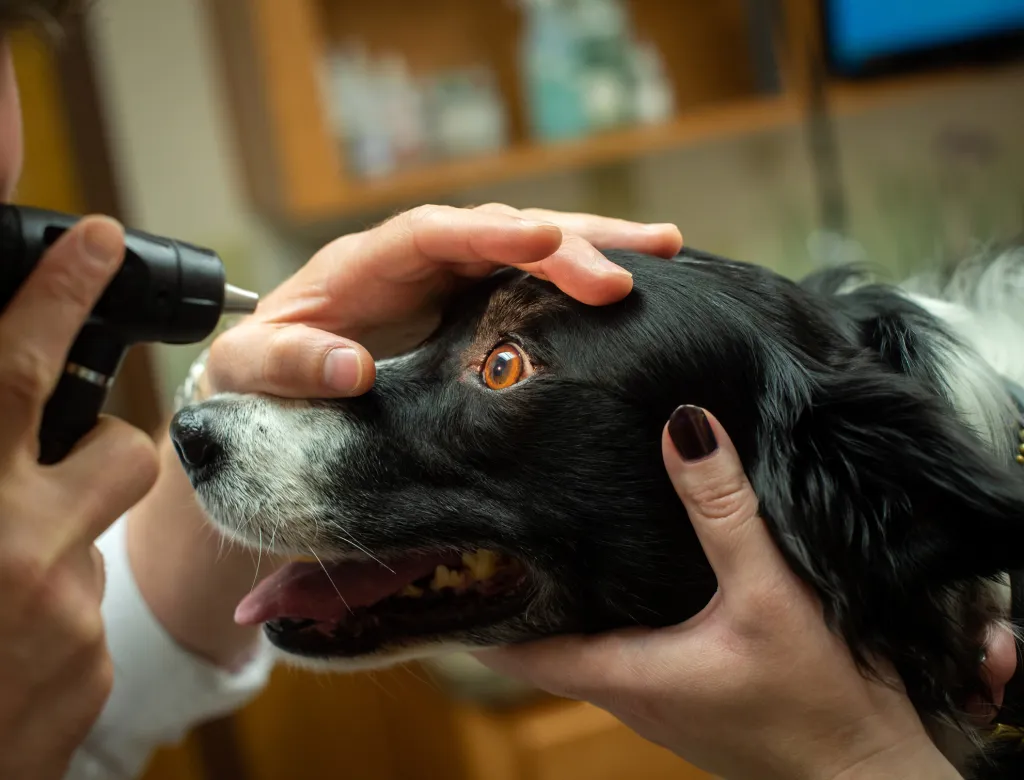Heterochromia in Dogs: Symptoms, Causes, & Treatments

Heterochromia in dogs is a medical condition that affects the eyes. Specifically, it causes a pup to have two different colored eyes. Thankfully, the condition often doesn’t need treatment unless there is another underlying condition.
Technically, some dogs are born with heterochromia. For example, the Chihuahua, Great Dane, and Siberian Husky breeds can be predisposed to it. However, some canines also develop the condition later in life.
There are three types of heterochromia. Specifically, they are categorized depending on how much of a dog’s eye is affected.
If you see signs that your dog might be suffering from this condition, then you must consult your veterinarian for a proper diagnosis and course of treatment. Here’s what you should know about the symptoms, causes, and treatments of heterochromia in dogs.
@media (min-width: 0px) and (max-width: 749px) { .pb_prebidjs_300x250_a__wrapper { min-height: 250px; } } @media (min-width: 750px) { .pb_prebidjs_300x250_a__wrapper { display: none; } }
Symptoms of heterochromia in dogs

The condition in dogs causes the eyes to be different colors. Technically, there are three types of heterochromia:
- Heterochromia iridis (two different colored eyes)
- Sectoral heterochromia (a partially blue iris)
- Central heterochromia (blue color mixes with another color to look like spikes)
Thankfully, the condition doesn’t usually cause any other symptoms when a pup is born with it. Technically, this is called inherited heterochromia.
However, if your dog’s eyes start changing color later in life, consult your vet. These cases are called acquired heterochromia and may be caused by an underlying condition. Usually, canines are born with blue or blue-gray eyes. Generally, any color changes happen by 16 weeks of age.
Finally, it is sometimes thought the condition also causes hearing problems. However, this has only been found to be the case with Dalmatians.
Causes of heterochromia in dogs

The cause of the condition is sometimes inherited. This means a dog is born with it.
For example, the following breeds can be predisposed to it:
- Alaskan Malamute
- American Foxhound
- Australian Cattle Dog
- Chihuahua
- Catahoula Leopard Dog
- Pembroke Welsh Corgi
- Siberian Husky
- Dachshund
- Shih Tzu
- Border Collie
- Dalmatian
- Great Dane
- Shetland Sheepdog
- Beagle
- Australian Shepherd
However, some dogs may also develop the condition later in life. This is called acquired heterochromia. Sometimes, the cause of this ailment can be trauma or inflammation of the eye. Also, autoimmune issues, bleeding problems, and cancer have been linked to it.
Additionally, dogs with certain coats are more likely to develop the condition. Specifically, canines with white, dappled, or merle-colored fur around their heads are prone to heterochromia.
Treatments for heterochromia in dogs
Firstly, if you think that your dog might be developing the condition, your vet will want to carry out an eye examination of your dog. Secondly, your vet will ask about your dog’s complete medical history. This will include any breed-specific problems.
At this time, there is no current treatment for heterochromia. However, in cases where a dog is born with it, there often aren’t any symptoms or loss of vision.
However, if your dog develops the condition later in life, your vet will want to find out if there is an underlying cause, such as trauma to the eye. So, always consult your vet if you notice any changes to your pup’s eyes.

Bone Cancer in Dogs: Symptoms, Causes, & Treatments

Canine Influenza: Symptoms, Causes, & Treatments

Mastitis in Dogs: Symptoms, Causes, & Treatments

Dog Breath Fresheners: What To Know

Puppy Impetigo in Dogs: Symptoms, Causes, & Treatments

What a Dog’s Tail Is Telling You

Benadryl for Dogs: Dosage, Uses, & Side Effects




